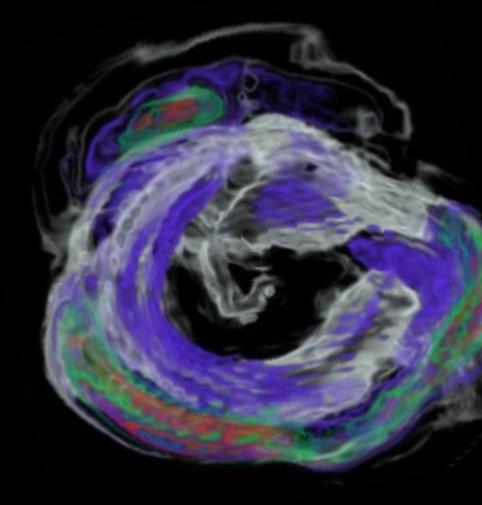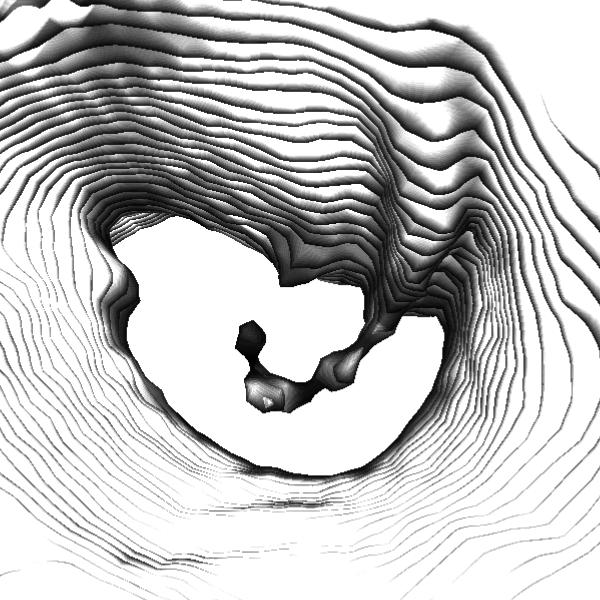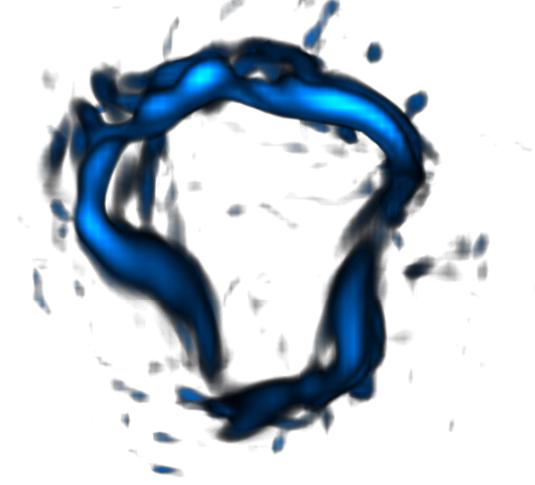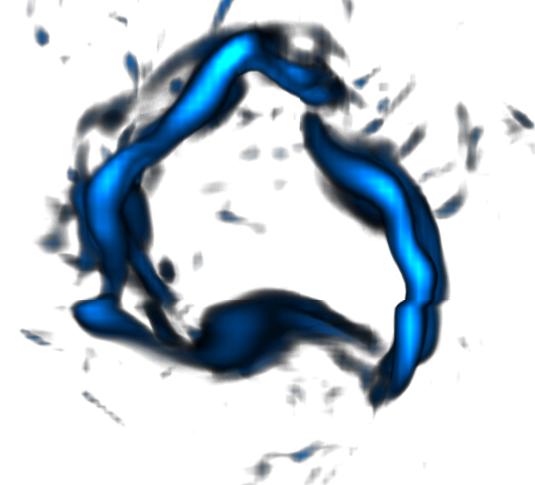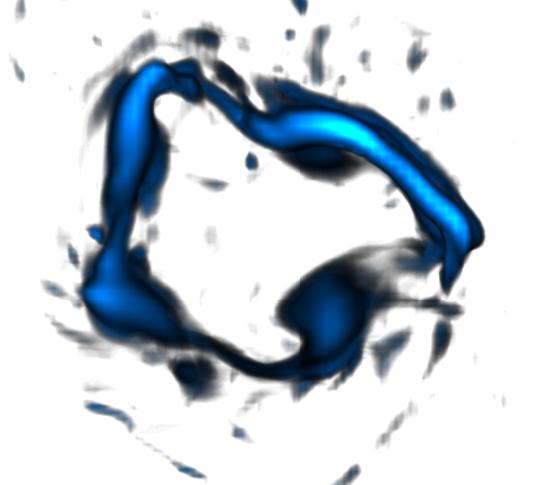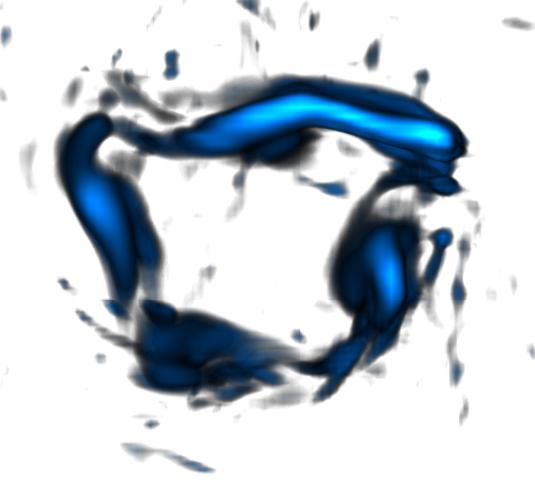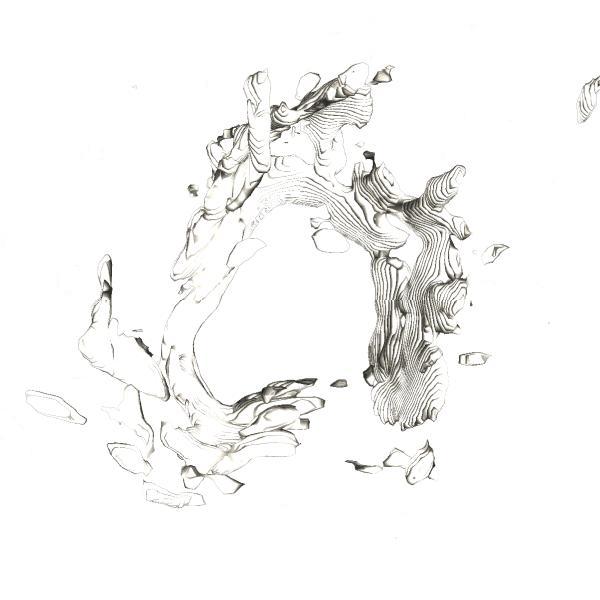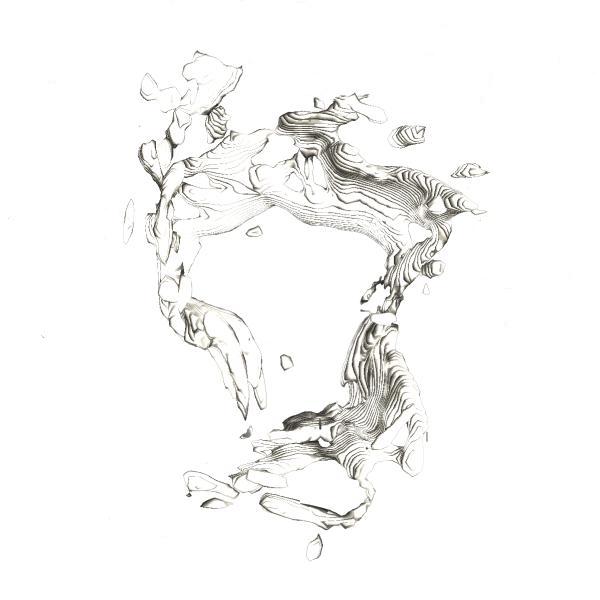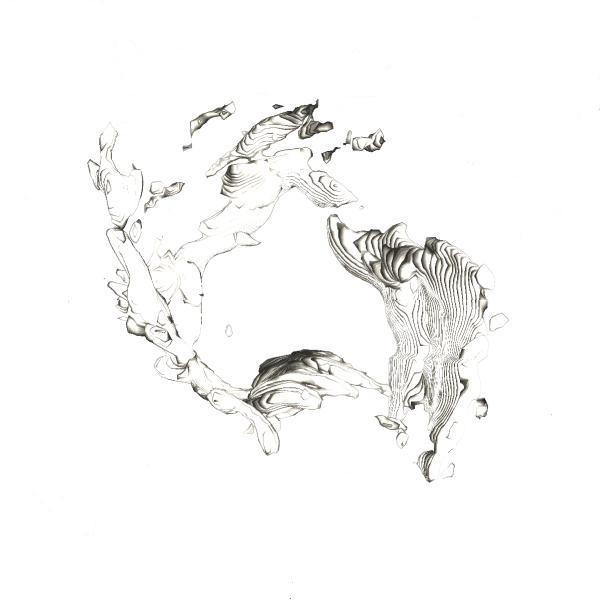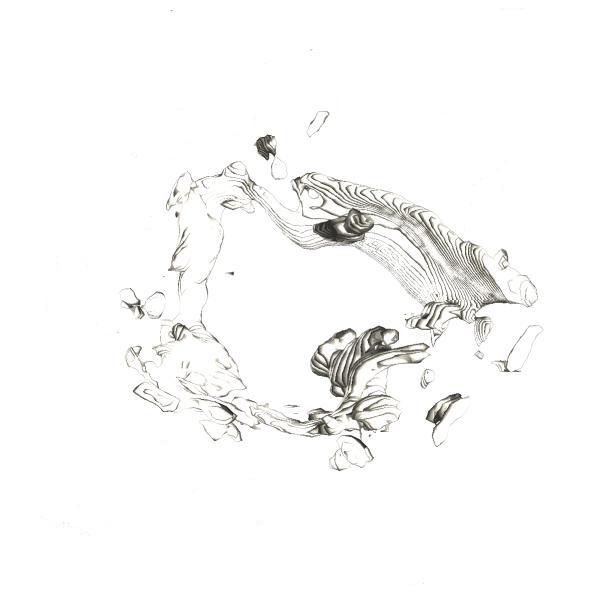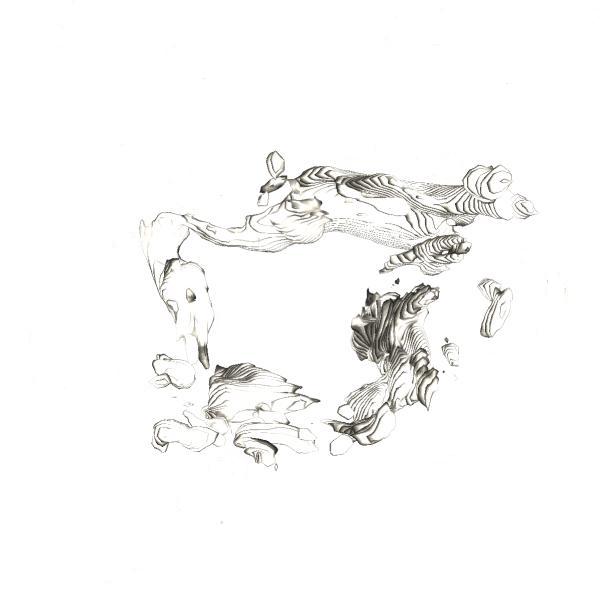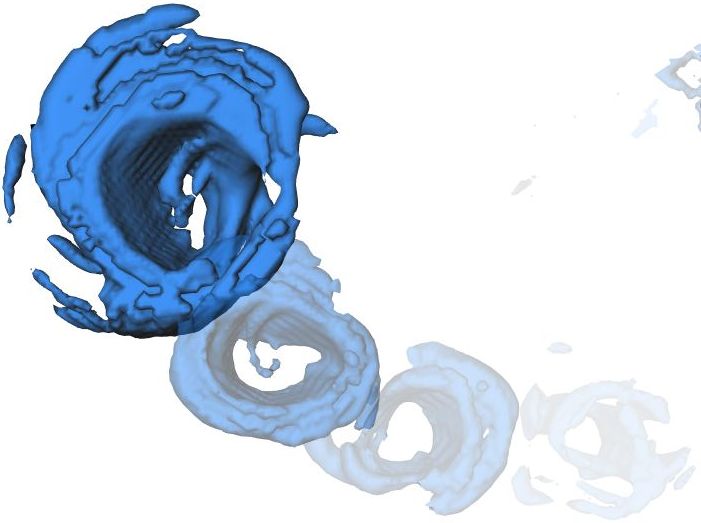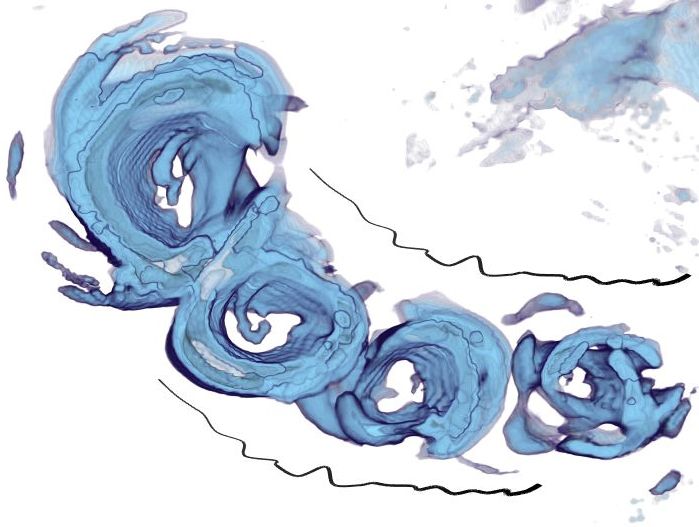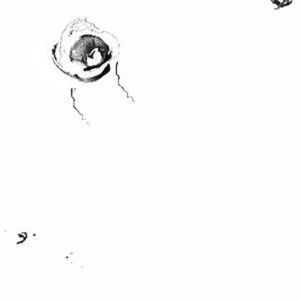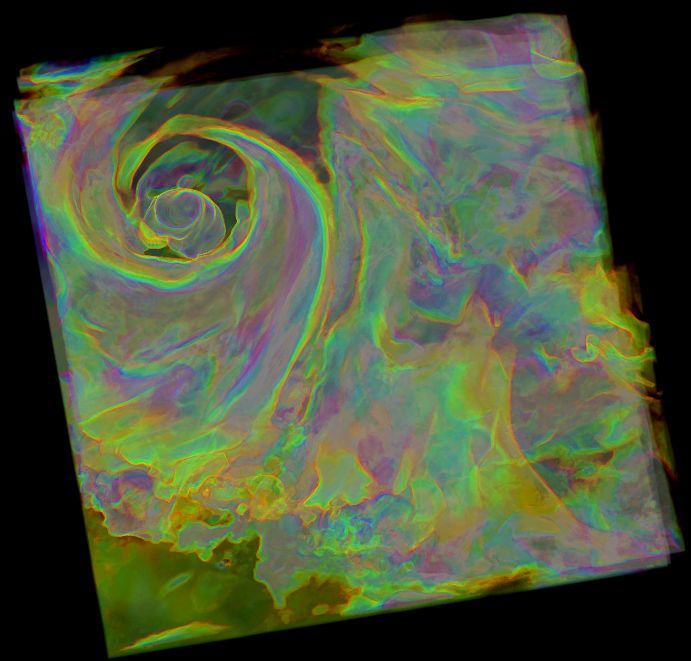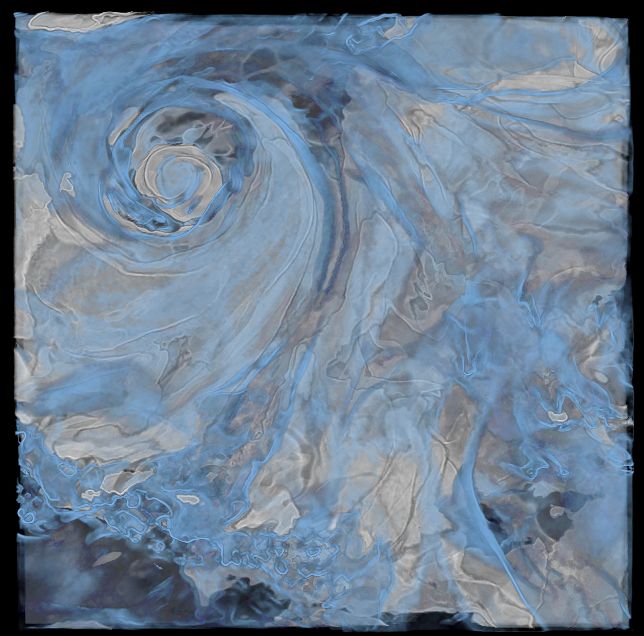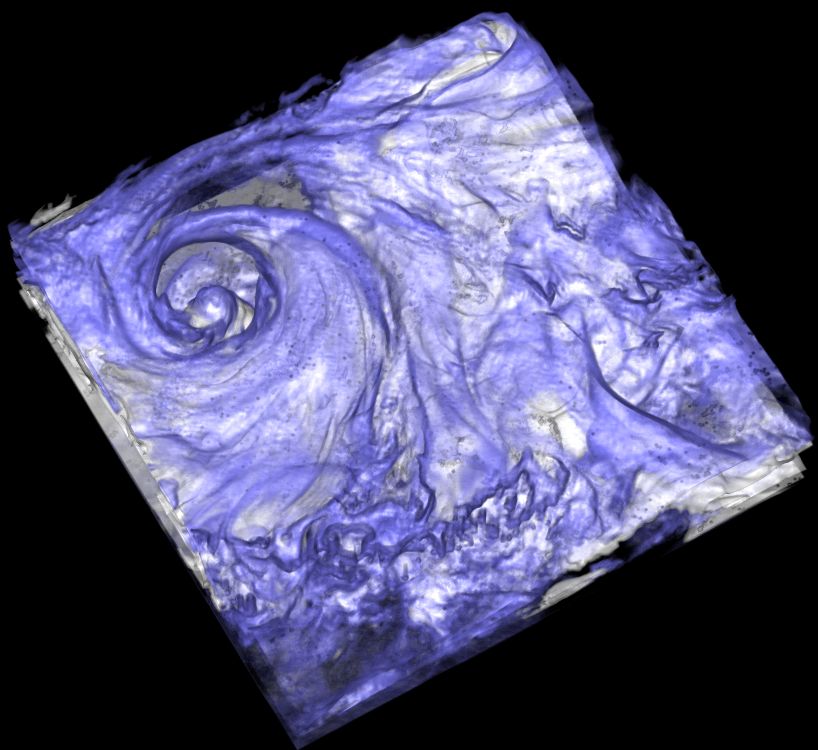
Original volume rendered image with lighting of the humidity attribute in Hurricane Katrina. The eye of the hurricane can be seen in the top left region of the image. The rainbands, which are spiral structures emanating from the eye too can be seen.

This image depicts a visualization generated using the boundary enhancement technique of the humidity attribute. In this image, the eyewall of the hurricane too is visible along with the eye. The eyewall is well-defined and implies that the hurricane is a category 4 hurricane in this timestep. The rainbands too are more well defined.

In this image a visualization generated using silhouette enhancement technique clearly shows the eye, the eyewall and the rainbands. These "interesting" features are preserved and accentuated while the other uninteresting regions are eliminated.
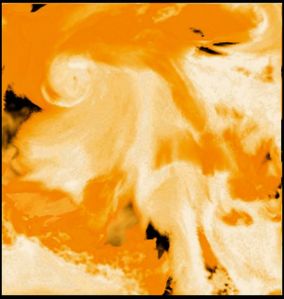
Volume rendering of the humidity attribute in the 71st timestep of hurricane Katrina.
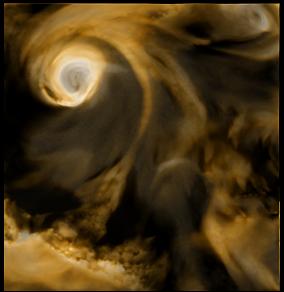
Boundary enhanced version.
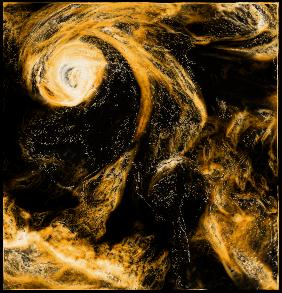
Boundary and Silhouette enhanced.
